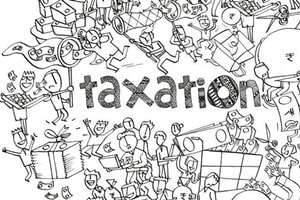Taxes withheld on salaries is based on the investment declaration filed by the employee at the start of the year. However, now, the Central Board of Direct Taxes (CBDT) has formalised the manner in which the declaration has to be filed.
Withholding tax provisions applicable to the salaried class requires the employer to consider expenditure incurred by employees while granting exemption for allowances or considering non-taxability of reimbursements. In this regard, the employer is permitted to consider non-salary related expenditure/investments made by employee as deduction from salary income like interest on self-occupied house property, life insurance premium etc, based on particulars submitted by the employee. However, there was no specific form or manner in which the particulars and evidences need to be furnished.
The annual salary TDS circular issued by the CBDT provides guidance to employers on the nature of evidences to be collected from employees for different claims. However, this leads to lack of uniformity in the approach adopted by all employers, leading to confusion for employees.
In order to bring uniformity in assessing officers’ approach and to avoid unnecessary litigation, the CBDT has modified the tax rules in this regard by introducing a new form for employees to furnish details of investments/expenditure to employers for the purpose of computing withholding tax on their salary. The Finance Act, 2015, provided that employer shall obtain evidence and particulars of claim in a prescribed form which has led to introduction of this new Rule 26C which prescribes a new Form 12BB to be furnished by employees to their employer. The new rule and form prescribes evidences and particulars to be furnished for four items – house rent allowance (HRA), leave travel concession (LTC), interest on house property and deductions under Chapter VI-A.
Though this CBDT rule and form has been issued to bring uniformity in the approach to be followed by the employers, it still falls short of expectation from various angles and could lead to another set of issues. The new rule deals with only four items of expenditure/investments and does not cover any other items of claim that may be made by the employees. Clarity on other expenses also would have helped.
The CBDT has relaxed the existing requirement of furnishing evidence by way of a copy of rent receipts or interest certificate from lenders to claim exemption of HRA and deduction of interest on house property, respectively. Now the employee merely needs to provide particulars of landlord and lender. However, the mandatory provisions of obtaining the PAN of the landlord is clearly in contrast with the provisions of the salary TDS circular, which provided for a relief in this regard, whereby a declaration from the landlord that he does not have a PAN would have sufficed. Now, wherever the aggregate rent exceeds R1 lakh, the employee would have to mandatorily provide the PAN of the landlord.
The amended rules shall become effective from June 1, 2016, so the salaried class needs to gear up and start obtaining the missing details since the declaration to be filed by the employee shall become a part of TDS return to be filed by the employer. Also, as the employer has to face consequences in case of default in obtaining declaration, the employer would be more stringent with the regulations. Though the new rules are broadly just codifying the practice currently being followed some clarity is required in case the landlord doesn’t have a PAN or whether Form 12BB once filed can be revised.
The writer is executive director, Nangia & Co
